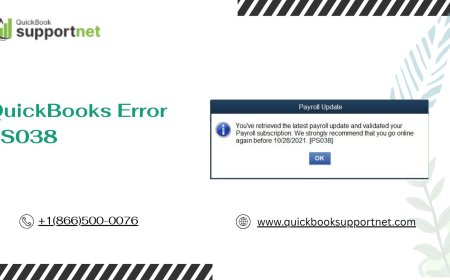How To Hike Losco Loop Jacksonville
How to Hike Losco Loop Jacksonville The Losco Loop in Jacksonville, Florida, is one of the city’s most underrated natural treasures — a serene, well-maintained trail system nestled within the lush, subtropical landscape of the Timucuan Ecological and Historic Preserve. While not as widely known as nearby attractions like Amelia Island or the St. Johns River waterfront, the Losco Loop offers hikers
How to Hike Losco Loop Jacksonville
The Losco Loop in Jacksonville, Florida, is one of the city’s most underrated natural treasures — a serene, well-maintained trail system nestled within the lush, subtropical landscape of the Timucuan Ecological and Historic Preserve. While not as widely known as nearby attractions like Amelia Island or the St. Johns River waterfront, the Losco Loop offers hikers an immersive, low-impact experience through pine flatwoods, salt marshes, and hardwood hammocks. For outdoor enthusiasts seeking solitude, wildlife observation, and a true connection with North Florida’s native ecosystems, mastering how to hike Losco Loop Jacksonville is essential. This guide provides a comprehensive, step-by-step roadmap to ensure your hike is safe, rewarding, and environmentally responsible.
Unlike urban trails that cater to joggers and dog walkers, the Losco Loop is designed for those who appreciate quiet immersion. Its unpaved paths, minimal signage, and lack of commercial development make it a hidden gem — but also a challenge for first-time visitors. Without proper preparation, even experienced hikers can become disoriented or unprepared for the region’s humidity, insects, and sudden weather shifts. This guide eliminates guesswork. Whether you’re a local looking to explore a new trail or a visitor planning a nature-focused itinerary, this tutorial will equip you with the knowledge to navigate, enjoy, and respect the Losco Loop.
Step-by-Step Guide
1. Research and Plan Your Route
Before setting foot on the trail, understanding the Losco Loop’s layout is non-negotiable. The loop is approximately 2.5 miles in total length, though variations exist depending on trail junctions and side paths. The main loop is a figure-eight pattern connecting two primary trails: the Losco Trail and the Salt Marsh Trail. Most hikers begin at the designated trailhead located off of San Jose Boulevard, near the intersection with Arlington Road.
Use Google Maps or AllTrails to locate the official trailhead coordinates: 30.3452° N, 81.6091° W. Bookmark the location on your phone, but do not rely solely on digital maps — signal can be spotty in dense foliage. Print a paper map from the National Park Service’s Timucuan Preserve website or pick one up at the visitor center at Fort Caroline. The map will show key landmarks: the boardwalk over the salt marsh, the pine ridge crossing, and the wooden footbridge over the small creek near the loop’s midpoint.
Plan your route based on your fitness level. Beginners should stick to the main loop without detours. Intermediate hikers can extend their journey by adding the 0.6-mile Osprey Overlook spur, which offers panoramic views of the marsh. Advanced hikers may combine the Losco Loop with the nearby Fort Caroline Trail for a 5-mile circuit. Always note the estimated time: 1.5 to 2.5 hours depending on pace and stops.
2. Choose the Right Time of Day
Timing is critical for maximizing comfort and safety on the Losco Loop. The best times to hike are early morning (6:00 AM to 9:00 AM) or late afternoon (4:00 PM to 7:00 PM). Midday hikes between 10:00 AM and 3:00 PM are strongly discouraged due to intense heat and humidity, which can exceed 90°F with a heat index over 105°F during summer months.
Early morning offers the clearest visibility, cooler temperatures, and the highest chance of wildlife sightings — including white-tailed deer, river otters, and a variety of wading birds such as great blue herons and roseate spoonbills. The morning light filters beautifully through the canopy, making photography easier. Late afternoon hikes provide a peaceful, golden-hour ambiance and fewer insects, as mosquito activity declines after sunset.
Avoid hiking after heavy rainfall. The trail becomes muddy and slippery, and the salt marsh boardwalk can be dangerously slick. Check the National Weather Service for Jacksonville before heading out. If thunderstorms are forecast, reschedule — lightning poses a real risk in open marsh areas.
3. Dress Appropriately
Proper attire is your first line of defense against discomfort and injury. Wear lightweight, moisture-wicking clothing in light colors to reflect sunlight and reduce heat absorption. Long sleeves and pants are recommended, even in summer, to protect against poison ivy, ticks, and biting insects.
Footwear is critical. Sturdy, closed-toe hiking shoes or trail runners with excellent grip are mandatory. The trail surface consists of packed sand, pine needles, clay, and occasional exposed tree roots. Sandals, flip-flops, or worn-out sneakers will lead to slips, blisters, or ankle rolls. Break in your shoes before the hike — never wear new footwear on a remote trail.
Wear a wide-brimmed hat and UV-blocking sunglasses. Apply broad-spectrum SPF 30+ sunscreen to all exposed skin, including ears and the back of the neck. Reapply every two hours, especially after sweating. Don’t forget lip balm with SPF.
4. Pack the Essential Gear
Carry only what you need — the Losco Loop is not a backpacking route — but do not underestimate the essentials. Use a small, waist-pack or crossbody bag for easy access and balance.
Essential items include:
- At least 2 liters of water per person — hydration is non-negotiable in Florida’s humidity
- Electrolyte tablets or sports drink powder to prevent cramping
- A lightweight, compact first-aid kit with antiseptic wipes, bandages, and tweezers
- Insect repellent containing DEET or picaridin — reapply every 2–3 hours
- A whistle for emergency signaling
- A small, lightweight emergency blanket (space blanket)
- A fully charged power bank and a physical map as backup
- Ziplock bags for trash and wet items
Do not carry glass containers, excessive food, or bulky items. There are no trash cans on the trail — pack out everything you bring in. Leave no trace is not a slogan here — it’s a survival rule.
5. Navigate the Trail with Confidence
Signage on the Losco Loop is minimal. You’ll find occasional wooden trail markers with yellow dots or small metal plaques, but they are not always visible. Learn to read natural navigation cues:
- Follow the raised wooden boardwalk — it’s the only consistent paved section and leads directly to the salt marsh
- Look for the distinctive pine trees with flaky, orange-brown bark — they mark the ridge trail
- Listen for the sound of water — the creek crossing is audible 100 yards before you reach it
- Watch for deer paths — they often intersect the main trail and can lead you astray if followed blindly
Use the sun as a compass. In the morning, it rises in the east — if you’re heading clockwise on the loop, the sun should be on your left. In the afternoon, it’s on your right. Keep this mental orientation as you move.
Take note of landmarks: the large live oak with the hollow trunk near the midpoint, the cluster of cypress knees by the creek, and the broken concrete slab from an old homestead foundation. These help you confirm your location if you’re unsure.
If you lose your way, stop. Do not panic or wander. Sit down, reorient yourself using your map and compass. If you still can’t determine your location, stay put and use your whistle — three short blasts are the universal distress signal. Rangers patrol the preserve on weekdays; your chances of being heard are good.
6. Observe Wildlife Responsibly
The Losco Loop is home to over 150 bird species, black bears (rarely seen), foxes, alligators, and countless reptiles and amphibians. Observe from a distance. Never feed wildlife — even a well-intentioned peanut can alter an animal’s natural behavior and make it dependent on humans.
Alligators are present in the salt marsh and creek areas. They are generally shy and will retreat if you maintain a distance of at least 15 feet. Do not approach, provoke, or attempt to photograph them up close. If you see an alligator basking on the bank, give it a wide berth — do not walk between it and the water.
Watch for snakes, especially copperheads and cottonmouths, which are active during warm months. Stay on the trail. If you encounter one, freeze, observe it from afar, and slowly back away. Do not try to move or kill it — most bites occur when people attempt to handle snakes.
Bring binoculars. They enhance the experience without disturbing wildlife. The Osprey Overlook is a prime spot for spotting bald eagles, ospreys, and occasionally, a red-shouldered hawk nesting in the canopy.
7. Practice Leave No Trace Principles
Leave No Trace is the cornerstone of responsible hiking on the Losco Loop. This preserve is protected under federal law, and violations can result in fines. Follow these seven principles:
- Plan ahead and prepare — know the rules and weather.
- Travel and camp on durable surfaces — stay on marked trails.
- Dispose of waste properly — carry out all trash, including food wrappers and biodegradable items like fruit peels.
- Leave what you find — do not pick flowers, collect shells, or carve into trees.
- Minimize campfire impact — fires are prohibited on the trail.
- Respect wildlife — observe quietly and from a distance.
- Be considerate of others — yield to hikers going uphill, keep noise low, and avoid playing music.
Even biodegradable items like banana peels or apple cores can attract invasive species or disrupt natural decomposition cycles. Pack everything out. Use portable toilet bags if you must relieve yourself off-trail — dig a hole 6–8 inches deep at least 200 feet from water sources and cover completely.
8. Complete the Loop and Return Safely
As you near the end of the loop, pay attention to your energy levels. Fatigue can lead to poor decisions. Take a final water break at the trailhead picnic table before heading back to your vehicle. Check your feet for ticks — they are common in tall grass near the parking area. Use a tick key or tweezers to remove any attached ticks immediately.
Before leaving, take a moment to reflect. The Losco Loop is not just a trail — it’s a living ecosystem that has endured for centuries. Thank the land silently. Leave it as you found it.
Best Practices
1. Hike with a Buddy When Possible
While the Losco Loop is generally safe, hiking alone increases risk. If you must go solo, inform someone of your planned route and expected return time. Use a GPS tracker like a Garmin inReach or Apple Emergency SOS feature to send your location automatically if you stop moving for more than 10 minutes.
2. Avoid Peak Seasons for Maximum Solitude
Weekends and holidays see increased foot traffic, especially from families and dog walkers. For true solitude, visit on weekdays — Tuesday through Thursday are the quietest. Early spring (March–April) and late fall (October–November) offer the most pleasant temperatures and the lowest insect activity.
3. Respect Cultural and Historical Sites
The Losco Loop passes near remnants of pre-Columbian Native American middens and 19th-century homestead foundations. These are archaeological sites protected by federal law. Do not touch, climb on, or remove any artifacts. Even a single shell or pottery shard can be part of a larger cultural record.
4. Monitor for Allergies and Environmental Hazards
Poison ivy is widespread along the trail’s edges. Learn to identify it: “Leaves of three, let it be.” The plant has glossy, pointed leaflets that turn red in fall. Wear long sleeves and avoid brushing against vegetation. If you develop a rash, wash the area with soap and cold water immediately and apply calamine lotion. Carry an antihistamine in your first-aid kit.
Stinging nettles and fire ants are also present. Avoid sitting on the ground. Check your shoes before putting them on.
5. Prepare for Weather Variability
Florida weather changes rapidly. A sunny morning can turn into a thunderstorm by noon. Always carry a lightweight, packable rain jacket. If caught in a storm, seek shelter under dense canopy — avoid open areas, tall trees, and water edges. Do not use your phone under a tree during lightning.
6. Learn Basic First Aid
Know how to treat minor injuries: blisters, cuts, heat exhaustion, and insect stings. Carry a small tube of hydrocortisone cream for bug bites and aloe vera gel for sunburn. If someone shows signs of heatstroke — confusion, nausea, dry skin, rapid pulse — move them to shade, cool them with water, and call for help immediately.
7. Use Trail Etiquette
Yield to hikers going uphill. Step aside to let faster hikers pass. Keep dogs on a leash at all times — even well-trained dogs can startle wildlife. Do not let them off-leash, even if others do. If you encounter a group, step off the trail to let them pass. Quiet conversations are fine; loud music or shouting disrupts the natural soundscape.
8. Record Your Experience
Keep a journal or use a voice memo app to note wildlife sightings, trail conditions, and personal reflections. This helps you improve future hikes and contributes to citizen science. Many local conservation groups welcome data from hikers about bird populations or invasive species.
Tools and Resources
1. Official Park Resources
The National Park Service (NPS) maintains the Timucuan Ecological and Historic Preserve, which includes the Losco Loop. Visit nps.gov/timu for downloadable trail maps, seasonal alerts, and ranger-led program schedules. The visitor center at Fort Caroline offers free brochures and knowledgeable staff who can advise on current trail conditions.
2. Mobile Apps
Download these apps before your hike:
- AllTrails — Offers user reviews, elevation profiles, and GPS tracking. The Losco Loop has multiple user-submitted routes.
- Gaia GPS — Works offline and includes topographic layers for terrain analysis.
- iNaturalist — Helps identify plants and animals you encounter. Contributes data to scientific databases.
- Weather Underground — Provides hyperlocal forecasts for Jacksonville’s microclimates.
3. Books and Guides
For deeper context, consider:
- Florida’s Best Hikes by Michael Lanza — Includes a detailed chapter on the Losco Loop
- Wildlife of the Southeastern U.S. by John C. Kricher — Excellent for identifying birds and reptiles
- Leave No Trace: A Guide to the New Wilderness Etiquette by L.L. K. Haines — The definitive guide to ethical outdoor practices
4. Local Hiking Groups
Join online communities like “Jacksonville Hikers” on Facebook or “North Florida Trail Club” on Meetup. These groups organize weekly hikes on the Losco Loop and share real-time updates on trail closures, wildlife activity, and seasonal blooms.
5. Emergency Contacts
In case of emergency, dial 911. For non-emergency park information, call the Timucuan Preserve headquarters at (904) 605-6072. Keep this number saved in your phone. Rangers respond quickly to distress calls on the preserve.
6. Volunteer Opportunities
Want to give back? The NPS offers monthly volunteer trail maintenance days. Sign up through their website. Volunteers help clear debris, repair boardwalks, and remove invasive species. It’s a meaningful way to deepen your connection to the land.
Real Examples
Example 1: Sarah’s First Solo Hike
Sarah, a 28-year-old software developer from Jacksonville, decided to hike the Losco Loop after reading about it on a local blog. She planned her route using AllTrails, packed two liters of water, a hat, sunscreen, and a whistle. She started at 7:00 AM on a Tuesday. She encountered a black racer snake crossing the trail and paused for five minutes until it moved off. She spotted three great egrets feeding in the marsh and took photos with her phone. She followed the yellow trail markers and used the sun to orient herself. She completed the loop in 2 hours and 10 minutes. She returned home with a sense of calm and a new appreciation for the quiet beauty of her own city. She now hikes the loop every other week.
Example 2: The Family Adventure
The Rodriguez family — parents and two children aged 7 and 10 — visited the Losco Loop on a Saturday in November. They brought trail snacks, binoculars, and a printed map. The kids carried small backpacks with water and a nature checklist they created. They identified 12 bird species using the iNaturalist app. They stopped at the boardwalk to watch a turtle sunning itself. They stayed on the trail, packed out all trash, and even picked up three plastic bottles they found along the edge. The father said, “We didn’t just hike — we learned how to be guests in nature.”
Example 3: The Unexpected Challenge
Mark, an experienced hiker from Atlanta, attempted the Losco Loop in July after a heavy rain. He wore sandals and didn’t bring enough water. Within 45 minutes, he slipped on a muddy root, twisted his ankle, and became disoriented. He couldn’t find the trail markers. He sat down, used his phone’s SOS feature, and blew his whistle. A ranger patrolling the area heard him 20 minutes later. He was treated for a sprain and dehydration. He later wrote a blog post titled “Why the Losco Loop Doesn’t Forgive Complacency.” His story is now shared on the NPS website as a cautionary tale.
Example 4: The Conservationist’s Contribution
Dr. Elena Torres, a biology professor, uses the Losco Loop as a field site for her students. Each semester, her class conducts a biodiversity survey — counting bird nests, documenting plant species, and recording insect activity. Their data has helped the NPS identify an increase in the population of the endangered Florida scrub-jay in the preserve. One student’s discovery of a rare orchid led to a protected zone being established near the creek crossing. Their work proves that responsible hiking can contribute to science and conservation.
FAQs
Is the Losco Loop suitable for beginners?
Yes, the main loop is relatively flat and under 3 miles, making it ideal for beginners. However, the trail is unpaved and uneven, so proper footwear and preparation are essential. It’s not a paved sidewalk — it’s a natural path.
Are dogs allowed on the Losco Loop?
Dogs are permitted but must be kept on a leash no longer than 6 feet at all times. Owners are responsible for cleaning up after their pets. Dogs are not allowed on the salt marsh boardwalk due to wildlife sensitivity.
Can I bike the Losco Loop?
No. The Losco Loop is designated for foot traffic only. Bicycles, e-scooters, and other wheeled vehicles are prohibited to protect the trail surface and minimize disturbance to wildlife.
Are there restrooms on the trail?
No. The nearest restrooms are at the Fort Caroline Visitor Center, approximately 1.2 miles from the trailhead. Plan accordingly.
Is the trail accessible for people with mobility impairments?
The main trail is not ADA-compliant due to its natural surface. However, the salt marsh boardwalk is relatively flat and may be navigable with a sturdy wheelchair or mobility aid. Contact the NPS for current accessibility updates.
What’s the best season to hike the Losco Loop?
October through April offers the most comfortable temperatures and the lowest mosquito activity. Spring (March–April) brings wildflowers, while fall (November) features migratory birds.
Can I camp overnight on the Losco Loop?
No. Overnight camping is not permitted on the Losco Loop or within the Timucuan Preserve without a special permit, which is rarely granted for recreational use.
Are there water sources along the trail?
No. There are no natural water sources safe for drinking. Bring all the water you’ll need.
What should I do if I see an alligator?
Stay calm and slowly back away. Do not run. Do not throw objects. Maintain a distance of at least 15 feet. Alligators are protected species — harming one is illegal.
How do I report trail damage or illegal activity?
Contact the Timucuan Preserve headquarters at (904) 605-6072 or submit a report through the NPS website’s “Report a Problem” form. Include photos and exact location details if possible.
Conclusion
Hiking the Losco Loop in Jacksonville is more than a physical activity — it’s an act of mindfulness, a reconnection with the wild heart of Florida’s coastal ecosystems. Unlike the noise and rush of city life, the loop offers silence broken only by wind, birdcall, and the crunch of pine needles underfoot. It teaches patience, observation, and respect — qualities increasingly rare in our digital age.
By following this guide, you’re not just learning how to navigate a trail — you’re learning how to be a steward of nature. The Losco Loop doesn’t require grandeur to be meaningful. Its power lies in its subtlety: the way light filters through live oaks at dawn, the quiet glide of a heron across the marsh, the scent of damp earth after a brief rain.
As you prepare for your next hike, remember: you are a guest here. The land has existed long before you and will endure long after. Walk lightly. Listen deeply. Leave nothing but footprints — and take nothing but memories.
Whether you’re seeking solitude, science, or simply a break from screens, the Losco Loop awaits. Lace up your boots. Grab your water. Step onto the trail. And discover what Jacksonville’s wild heart has to teach you.

























